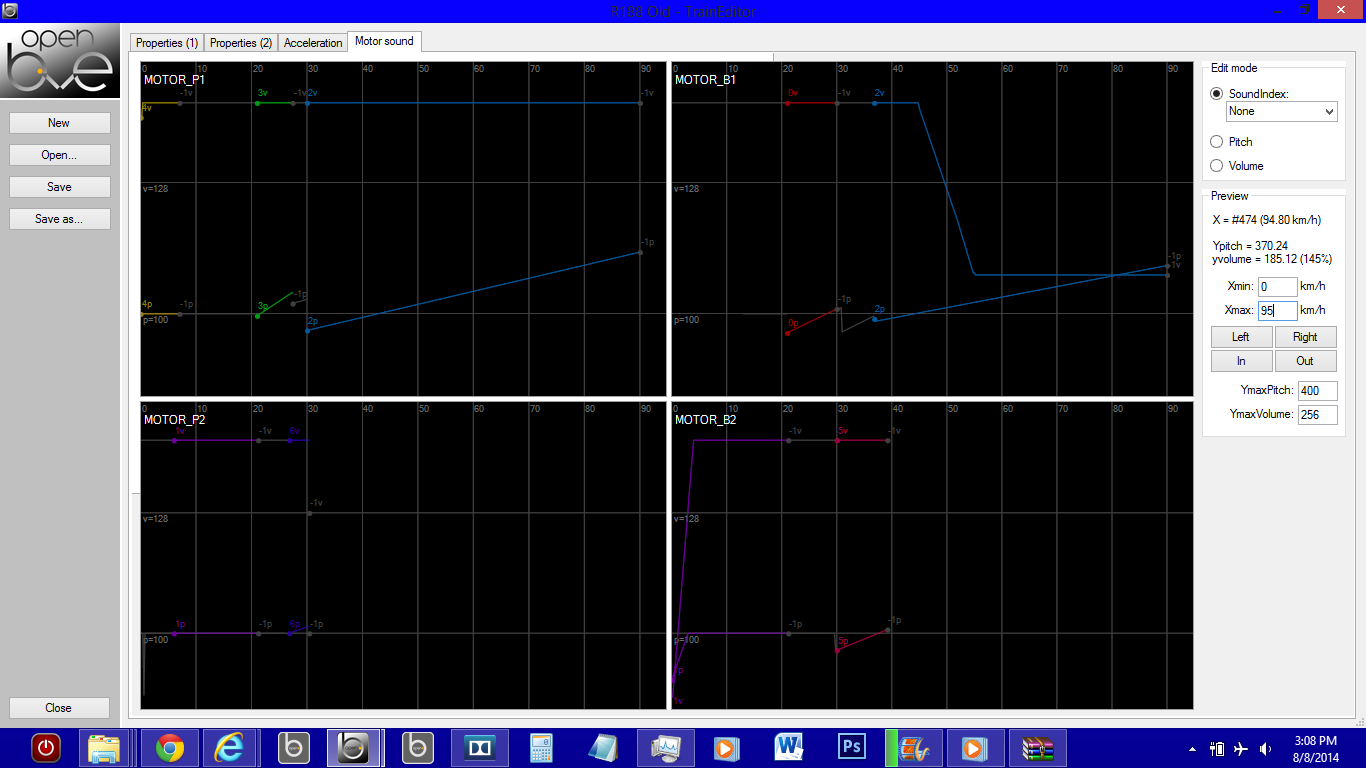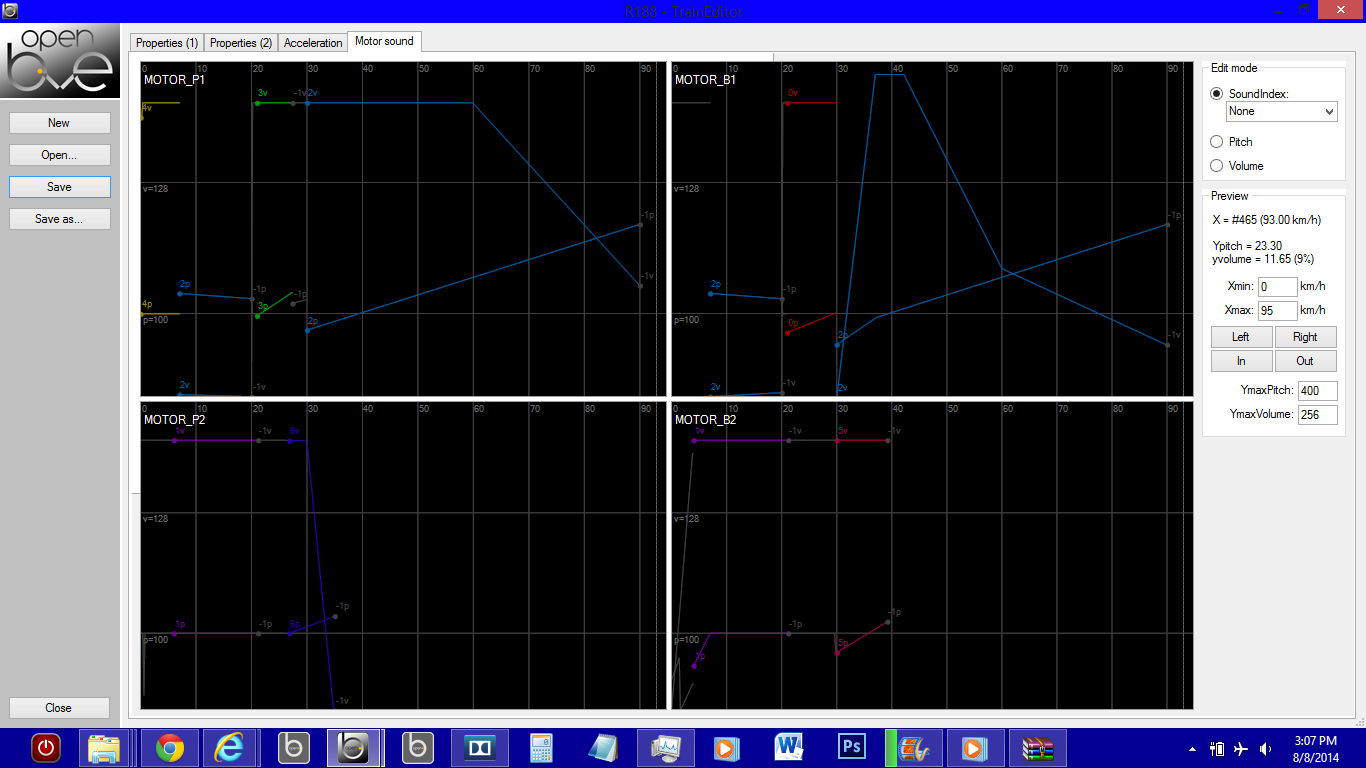http://www.youtube.com/watch?v=OgLGcEYdQYs#Current as of 8/11/14. There are two distinct packs for release here; one for regular OpenBVE users, and another specifically for developers.
Pack One for regular users (
http://www.mediafire.com/download/hmk9nzucc7xcnb4/OpenBVE_Fictional_NYC_Subway_R153_Trains_with_NTT_Propulsion_Pack.7z):
OpenBVE New York City Subway Fictional R153 With NTT Propulsion Mods (Alstom ONIX, Bombardier MITRAC 1508C, and Siemens SITRAC) Pack:
This is a sound and physics pack ONLY; I take no credit for the R153 exterior or cab, which was created by:
Original Train Programming - Blue18 (Lakiem Williams)
Original Train Sounds - Blue18 (Lakiem Williams), PuertoRican88 (Michael Garcia)
Exterior/Interior View - PuertoRican88 (Michael Garcia), Rikabs, D60HFMAN (Michael Bradshaw), Nyctrman (Randy Puello)
Train Cabs - Emil Luk (Mr. Railfan), Max Diamond (MC Hammers)
Sign animations - CT1660 (Chris Torres), Nightmare403 (Takeem Carter)
Additional Contributors - rstar (Armondo Toribio)
All sounds pulled from existing OpenBVE rolling stock; I take no credit for sound recording.
Motor sound timing and physics edit credits to me, Mike Kam (Fan Railer)
To install, simply copy and paste the folder found in the .rar file into your openBVE train folder.
This pack comes with the R153 using the R160A Alstom cab & equipped with the following propulsion:
-Alstom ONIX propulsion (R160)
-Bombardier MITRAC 1508C propulsion (R142A, R143, R188)
-Siemens SITRAC propulsion (R160B Siemens)
The trains come in 2, 4, and 8 car sets for all three propulsion sound sets.
Trains also come with new or old brakes, as specified by the folder title.
Enjoy =)
Pack Two for developers (
http://www.mediafire.com/download/78c68n1egwudati/OpenBVE_New_York_City_Subway_NTT_(R142,_R142A,_R143,_R160,_R188)_Propulsion_Developer's_Pack.7z):OpenBVE New York City Subway NTT Propulsion Mods (Alstom ONIX, Bombardier MITRAC 1508C, and Siemens SITRAC) Developer's Pack:
All sounds pulled from existing OpenBVE rolling stock; I take no credit for sound recording.
Motor sound timing and physics edit credits to me, Mike Kam (Fan Railer)
This pack comes with:
-Alstom ONIX propulsion (R142)
-Alstom ONIX propulsion (R160)
-Bombardier MITRAC 1508C propulsion (R142A, R143, R188)
-Siemens SITRAC propulsion (R160B Siemens)
-New and Old Brake Shoe sounds
You will find that the train.dat and sound.cfg files are already programmed and preconfigured so that you can simply drag drop into any pre-existing train that you have.
Enjoy =)




